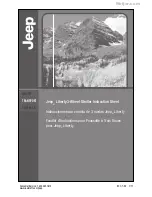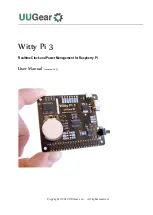
CHAPTER 8: APPLICATION OF SETTINGS
DISTANCE BACKUP/SUPERVISION
L90 LINE CURRENT DIFFERENTIAL SYSTEM – INSTRUCTION MANUAL
8-15
8
The total relay inaccuracy, including both steady state and transient overreach even when supplied from CVTs under the
source impedance ratios of up to 30, is below 5%.
8.4.2.3 Phase distance zone 2
Zone 2 is an overreaching element, which essentially covers the final 10 to 20% whole of the line length with a time delay.
The additional function for zone 2 is as a timed backup for faults on the remote bus. Typically the reach is set to 125% of
the positive-sequence impedance of the line, to ensure operation, with an adequate margin, for a fault at 100% of the line
length. The necessary time delay must ensure that coordination is achieved with the clearance of a close-in fault on the
next line section, including the breaker operating time.
The zone 2 time delay is typically set from 0.2 to 0.6 seconds, although this can have to be reviewed more carefully if a
short line terminates on the remote bus, since the two zone 2 elements can overlap and therefore not coordinate in a
satisfactory manner.
8.4.2.4 Phase distance zone 3
If a remote backup philosophy is followed, then the reach of this element must be set to account for any infeed at the
remote bus, plus the impedance of the longest line which terminates on this remote bus. The time delay must coordinate
with other time-delayed protections on any remote line. Circuit loading limitations created by a long zone reach can be
overcome by using lens or quadrilateral characteristics and/or a load encroachment supervising characteristic. Consider
also a situation where the load impedance can enter into the relay characteristic for a time longer than the chosen time
delay, which can occur transiently during a system power swing. For this reason, use the power swing blocking function.
8.4.2.5 Phase distance zone 4
A further contribution to remote backup, the reach of this element must be set to account for any infeed at the remote bus.
The time delay must coordinate with other time-delayed protections on the next line. The use of a lens characteristic or the
load encroachment element is advantageous if load limits are a problem.
To avoid extremely large reach settings, the L90 has the ability to implement any element so that it is reverse looking,
which then can provide a back up for the longest line terminated on the local bus. This strategy can be beneficial if the
reduced reach helps discrimination between the load and fault conditions, but must be implemented at both ends of the
protected line.
8.4.2.6 Phase distance zone 5
An additional fifth phase distance zone can be used in special applications. This zone can be the start zone for arming
tripping from all other zones, in both forward and reverse directions of the of protected line. This zone can also be used as
an additional reverse-looking zone for implementation of two reverse-looking zones, thus providing two zone backup
reverse-looking protection. The fifth distance zone can be used as an alarm zone, indicating that load impedance is
approaching the zone characteristic.
8.4.3 Ground distance
8.4.3.1 Neutral current supervision
The current supervision for the ground distance elements responds to an internally calculated neutral current (3 × I_0).
Base the setting for this element on twice the zero-sequence line capacitance current or the maximum zero-sequence
unbalance under maximum load conditions. Do not use this element to prevent an output when the load impedance is
inside the distance characteristic on a steady state basis.
8.4.3.2 Ground distance zone 1
The zone 1 reach must be set so that nominally instantaneous operation does not extend beyond the end of the protected
line. However this can be more complicated than for the phase elements, because of zero sequence mutual induction with
an adjacent parallel line, possibly carried on the same tower, which can be out of service and grounded at multiple points.
A fault beyond 100% of the protected line can cause overreach unless the reach is reduced significantly, sometimes as low
















































